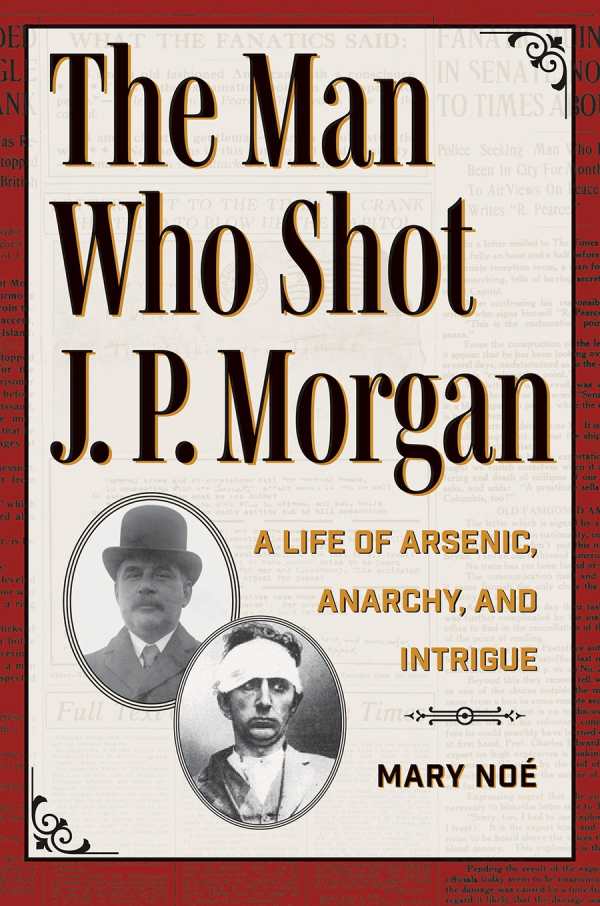The Man Who Shot J. P. Morgan
A Life of Arsenic, Anarchy, and Intrigue
Mary Noé’s keyhole true crime book The Man Who Shot J.P. Morgan is about false identities, radical politics, and the prewar tensions of the early twentieth-century US.
In Cambridge, Massachusetts, on April 16, 1906, Leone Krembs Muenter died days after giving birth. Her husband, Erich Muenter, a Harvard professor, claimed her Christian Science beliefs prohibited her from seeking medical intervention for a blood disorder, but an autopsy revealed Leone had been poisoned with arsenic. Muenter then vanished.
Nine years later, Frank Holt and wife Leona Sensabaugh lived in Ithaca, New York, where Holt taught German at Cornell University. Some of his academic peers felt certain they knew the man from somewhere else. Meanwhile, Holt—increasingly deranged in his efforts to keep the US out of WWI—blamed famous financier J. P. Morgan, Jr. for extending the war and suffering by financing the Allies in defiance of President Woodrow Wilson’s neutrality policy. Holt decided to act. After blowing up the Senate Reception Room with a timed explosive, he forced entry into the New York estate of Morgan and his family, shooting the forty-six-year-old businessman twice before being subdued. Morgan survived; Holt would not.
The book’s coverage of both incidents involves a plethora of primary sources, photographs, and newly discovered documents used to reveal the truth of the assassin’s identity and motives. It separates the major players into biographical “parts,” highlighting entertaining and illuminating facts about Muenter, Holt, and Morgan while incorporating the broader backdrop of the pre-WWI US, a hurly-burly society riven with cultural and social tensions. Reading like a historical police procedural, it zips along to its final, bizarre conclusion.
Combining elements of a biography with snappy journalistic reportage, The Man Who Shot J.P. Morgan is a brief, delightful true crime text.
Reviewed by
Peggy Kurkowski
Disclosure: This article is not an endorsement, but a review. The publisher of this book provided free copies of the book to have their book reviewed by a professional reviewer. No fee was paid by the publisher for this review. Foreword Reviews only recommends books that we love. Foreword Magazine, Inc. is disclosing this in accordance with the Federal Trade Commission’s 16 CFR, Part 255.

